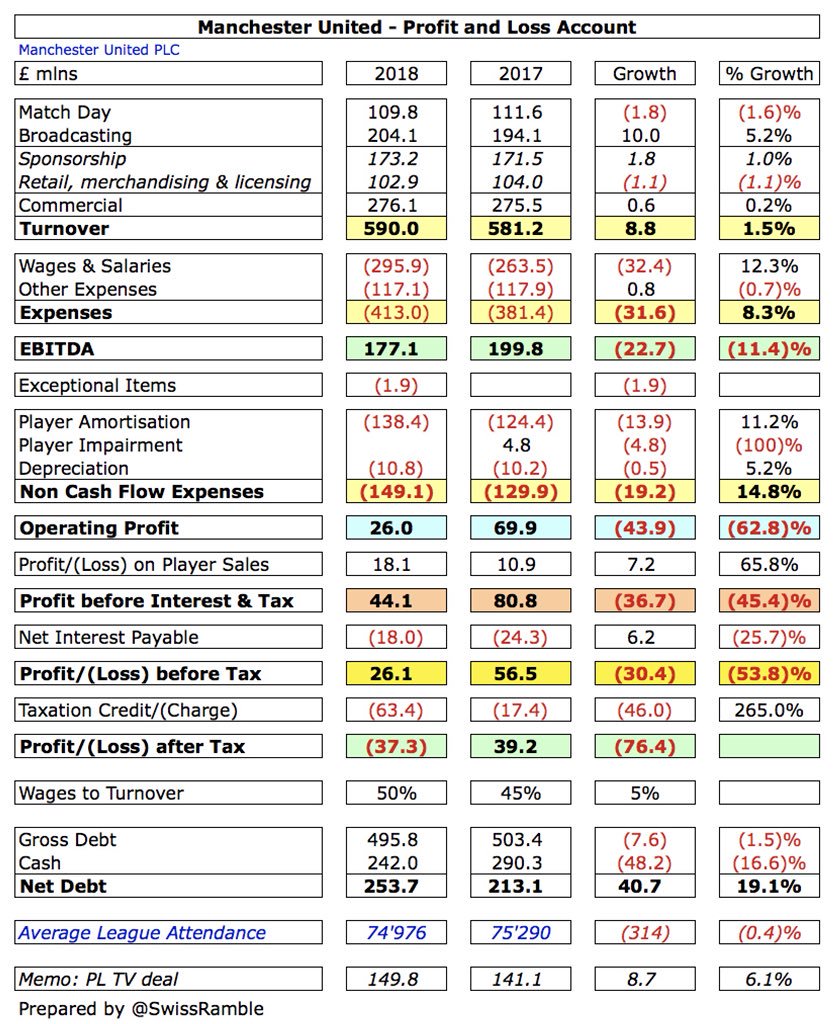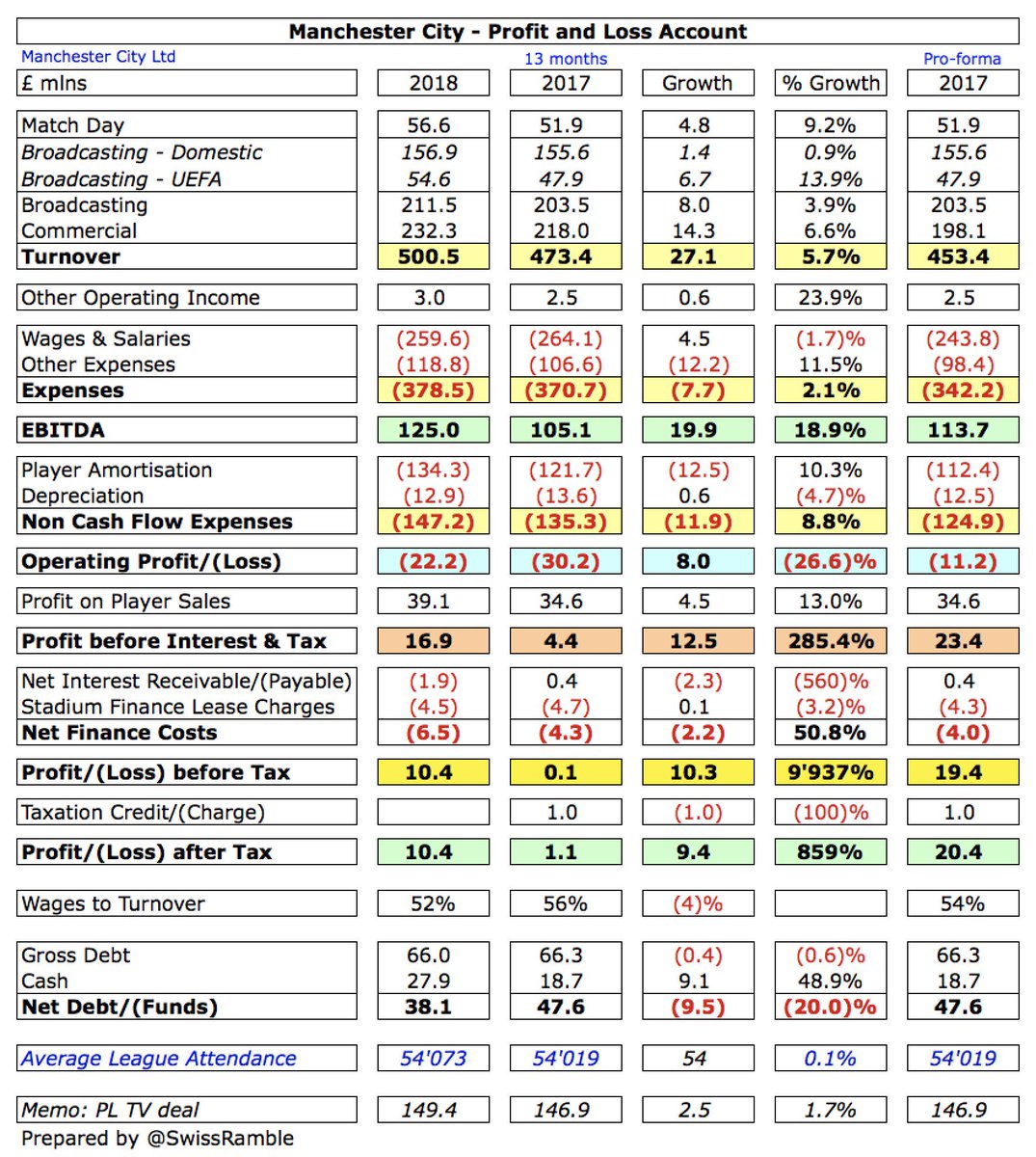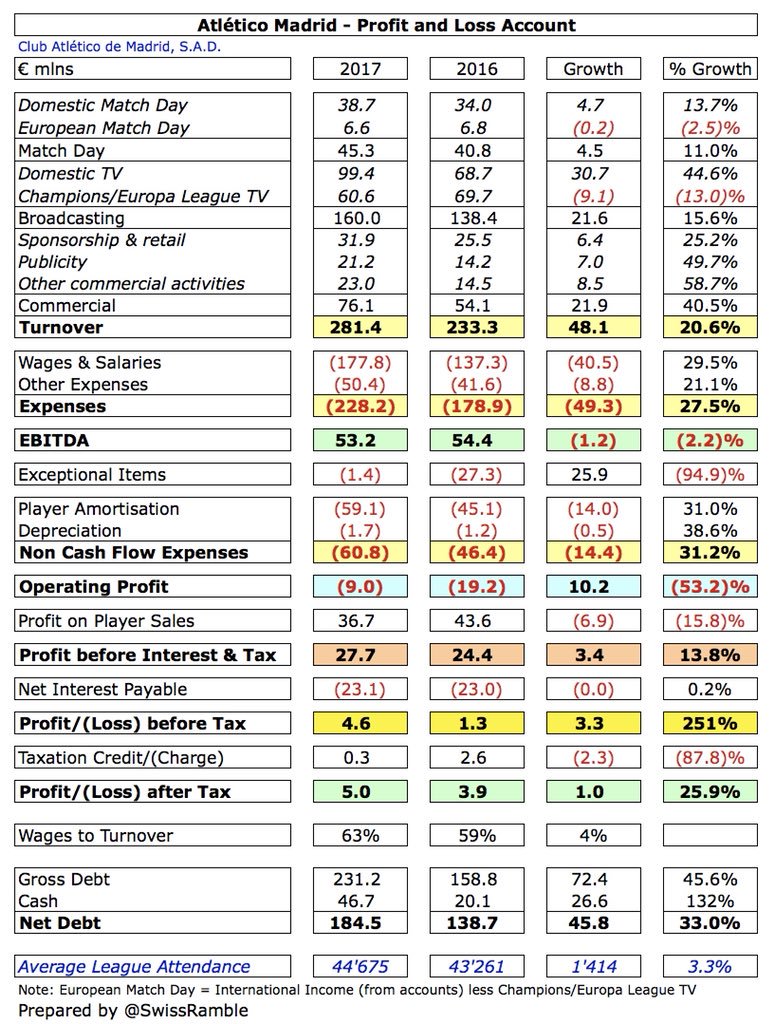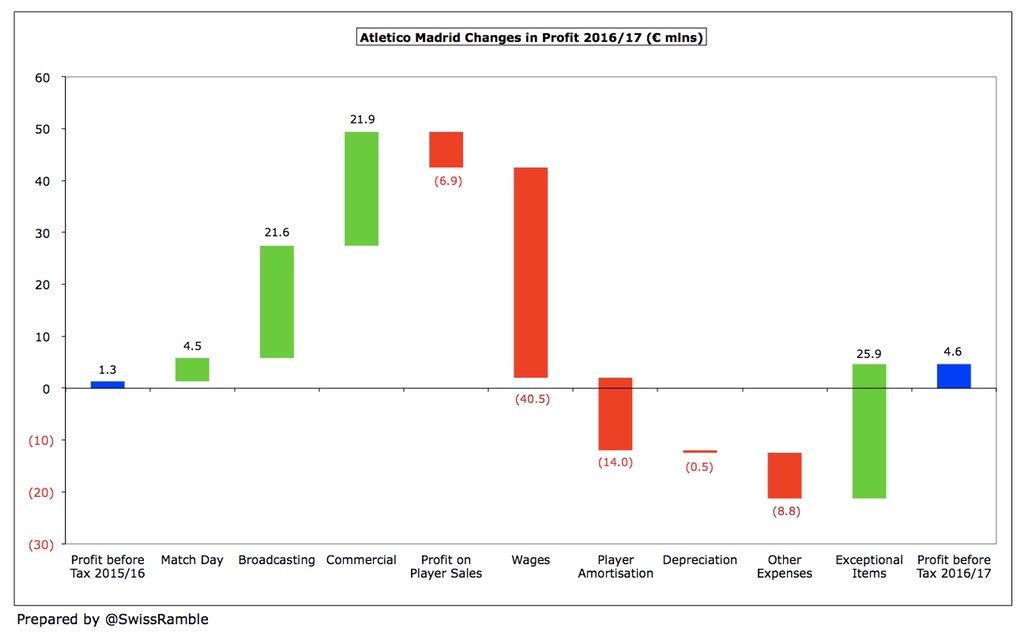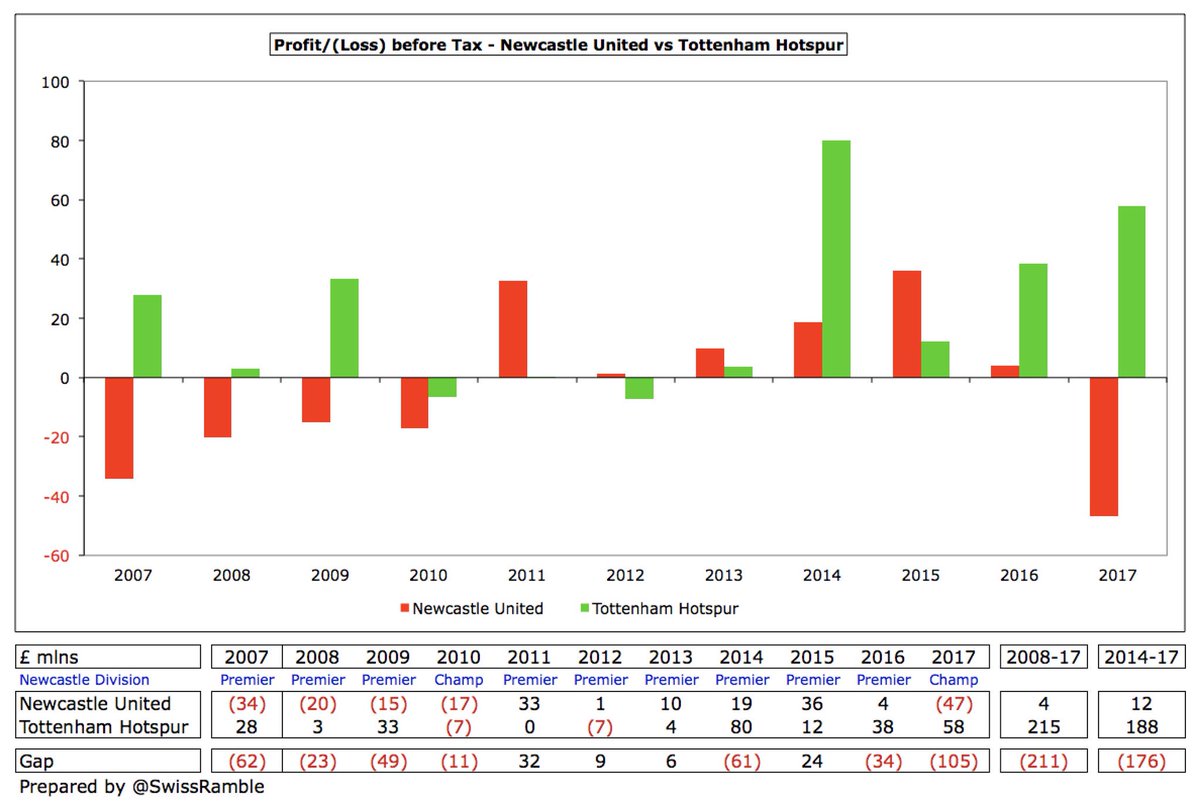Although the 2016/17 financial results for the Championship are now a season out-of-date, they are the most recent published by the clubs, so people might still be interested in the comparisons as the new season kicks-off. Some thoughts in the following thread.
In contrast to the Premier League, only 6 clubs in the Championship made money, led by #NFFC £32m & #BarnsleyFC £13m. In this very competitive division most clubs over-extend in a bid to reach the lucrative top flight. Largest losses at 2 promoted clubs: #NUFC £47m & #BHAFC £39m. 
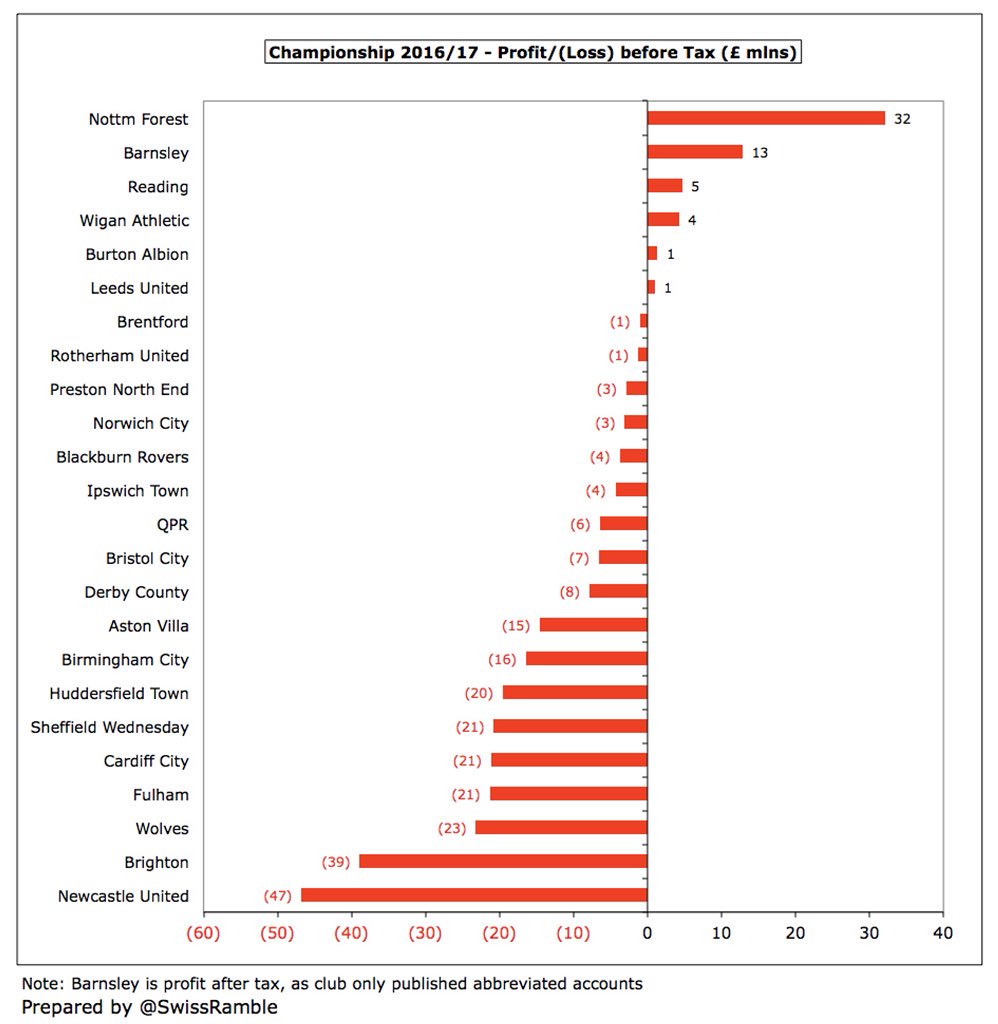
Some clubs’ figures impacted by significant exceptional items, so #NFFC (£40m) and #ReadingFC (£9m) were boosted by loan write-offs. In contrast, promotion bonuses adversely affected #HTAFC £12m, #NUFC £10m and #BHAFC £9m. Newcastle also booked £22m onerous contract provisions. 
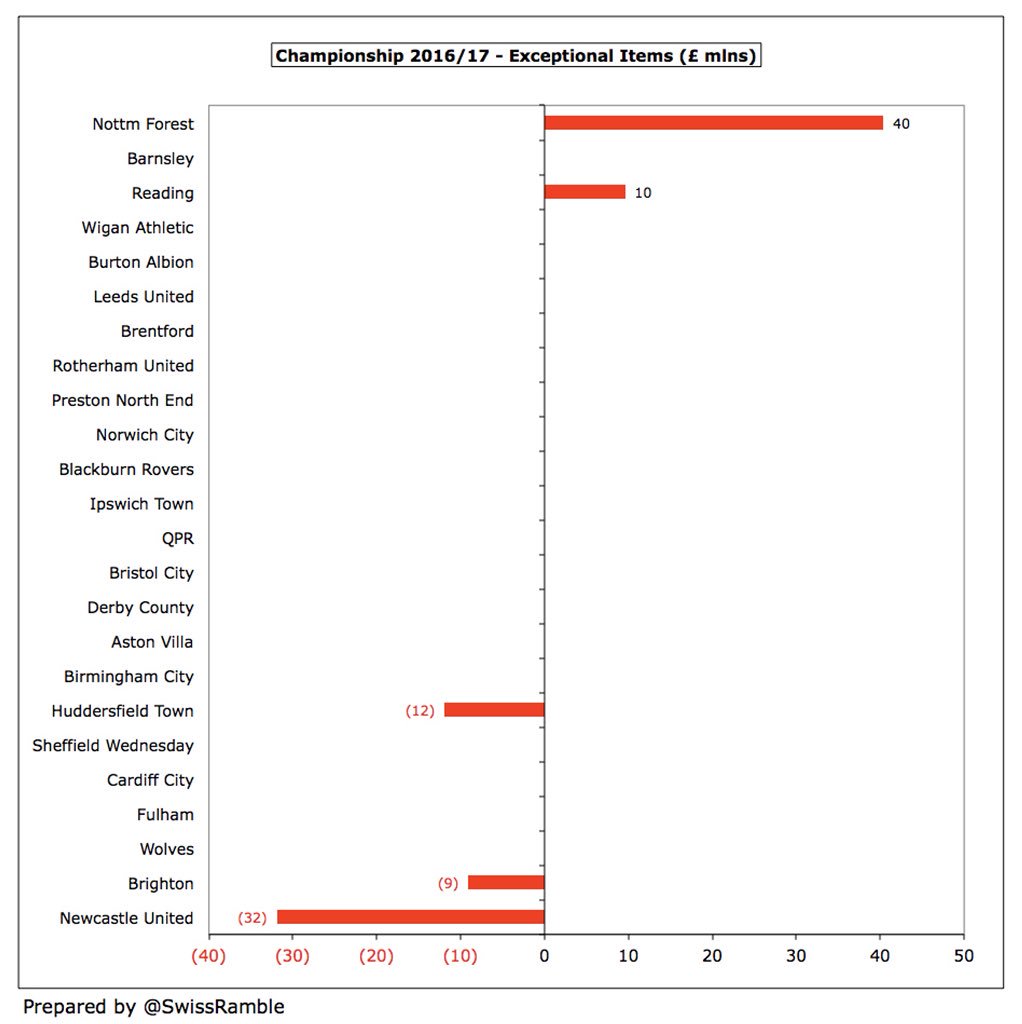
Excluding exceptional items, only 4 Championship clubs were profitable. Highest profit was £13m at #BarnsleyFC. Reasons not known for sure, as club only published abbreviated accounts, but likely to be due to player sales (Mawson, Hourihane & Bree plus John Stones sell-on fee). 
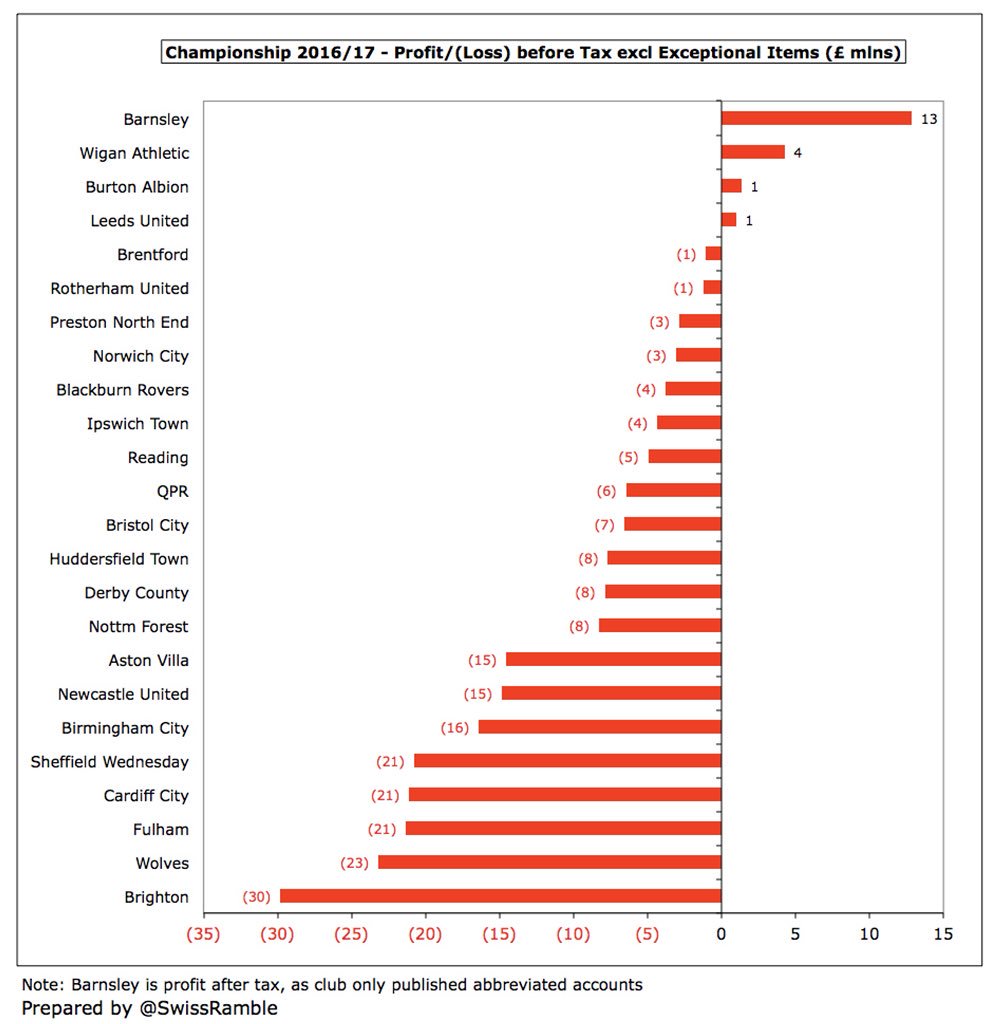
Profit on player sales is on low side in the Championship: below £20m for all but 2 clubs (and 15 of those were less than £10m). The exceptions were #NUFC £42m (Sissoko, Wijnaldum, Janmaat & Thauvin) and #AVFC £27m (Gueye, Traore, Gestede, Clark, Ayew, Westwood & Sinclair). 

Only 4 clubs reported positive EBITDA (Earnings Before Interest, Tax, Depreciation & Amortisation), which can be considered a proxy for cash operating profit, as it strips out player sales and once-off items: #QPR £5m, #NCFC £4m, #WAFC £2m and #Brewers £2m. 

#NUFC £86m revenue was the highest in the Championship in 2016/17 (a record for the division), ahead of the other 2 relegated clubs (#NCFC £75m and #AVFC £74m), then a sizeable gap to #QPR £48m and #ReadingFC £37m. Top club not benefiting from parachute payments was #LUFC £34m. 

Championship revenue is greatly influenced by those Premier League parachute payments, e.g. £41m given to #NUFC, #AVFC & #NCFC in 2016/17 (up from £26m in 2015/16 thanks to the new three-year PL TV deal). 

Even if parachute payments were excluded, the clubs with the highest revenue would still have been the 3 relegated from the Premier League: #NUFC £49m, #NCFC £39m and #AVFC £37m. Next highest are #LUFC £34m, ahead of promoted #BHAFC £29m and #DCFC £29m. Gap would be smaller. 

Most Championship clubs receive £7-8m TV money, including £2.3m EFL central distribution and £4.3m Premier League solidarity payment (up from £2.3m in 15/16, thanks to new 3-year deal). Differences mainly due to how many times club is shown live (£100k home game, £10k away). 

The huge increase in the Premier League TV deal (with clubs receiving £95m to £150m in 2016/17) helps explain why so many Championship clubs “go for it”, as the rewards for promotion are so high. However, it’s still a risky gamble, as seen by Villa’s recent problems. 

#NUFC match day revenue of £23m was more than twice as much as the next highest in the Championship (#AVFC £11m, #BHAFC £11m and #LUFC £10m) and was in fact above all but 7 Premier League clubs. Half the clubs earned less than £5m from this revenue stream. 

#NUFC attendance of around 51,000 was by far the highest in the Championship, nearly 20,000 more than the closest challenger #AVFC 32,000, who were followed by #DCFC 29,000, #BHAFC 28,000 and #LUFC 28,000. 

Only 6 Championship clubs generated more than £10m commercial income with #LUFC leading the way at £16m, just ahead of #NCFC and #NUFC (both £15m), then #AVFC £13m, #DCFC £12m and #BHAFC £10m. 

#NUFC £80m wage bill was miles above other Championship clubs, even after deducting £10m promotion bonus & £22m onerous contracts provision from the £112m reported by the club. Next highest were #AVFC £61m, #NCFC £55m & #FFC £37m (also clubs benefiting from parachute payments). 

It is worth noting that 3 of the 4 highest ever wage bills in the Championship were reported in 2016/17: #NUFC £80m, #AVFC £61m and #NCFC £55m. The exception is #QPR £75m in 2013/14, which was partly due to a failure to insert relegation clauses in player contracts. 

Over half of the Championship clubs pay more in wages than they earn, with the highest (worst) wages to turnover ratios at #Rovers 147%, #HTA 138% (impacted by promotion bonus) & #NFFC 137%. The best ratio was #LUFC 61%, though this is arguably evidence of inadequate investment. 

Many Championship clubs do not pay anything to their directors. The highest payments were at #BHAFC £1.7m (including £1.2m to chief executive Paul Barber) and #NCFC £1.1m (though this included £0.7m loss of office payment to Jez Moxey). 

Player amortisation, the annual charge to write-down transfer fees over the length of players’ contracts, was highest in the Championship at those clubs recently relegated from the Premier League: #NUFC £36m, #AVFC £24m and #NCFC £17m, followed by #FFC £14m. 

Although wages and player amortisation are obviously the highest costs at a football club, other expenses can also be an important factor, e.g. #AVFC and #NUFC we’re £27m and £25m respectively in 2016/17. 

#BHAFC depreciation of £4.4m was the highest in the Championship, representing the annual charge to write-off the cost of the Amex stadium and the new training ground. 
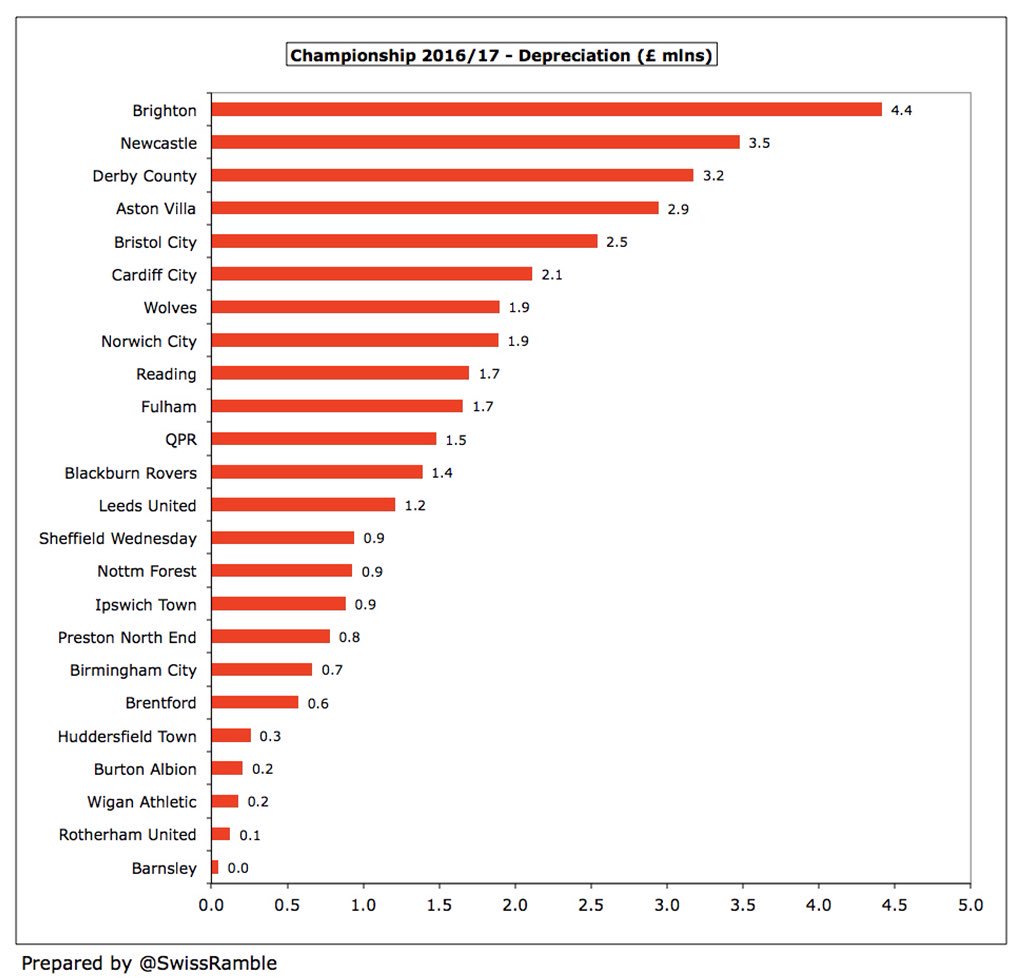
In 2016/17 there was an unprecedented £88m on player purchases at #AVFC, which was more than twice as much as the next highest club #NUFC £41m. They were followed by big-spending #WWFC £32m and #FFC 24m. Over half of the clubs spent less than £10m, including promoted #HTAFC £7m. 

Only 4 clubs in the Championship had net spend above £10m: #BHAFC £19m, #AVFC £14m, #DCFC £13m and #NUFC £11m. In fact, 10 clubs reported net sales with the highest at #NFFC £11m, #Rovers £9m and #ITFC £6m. 
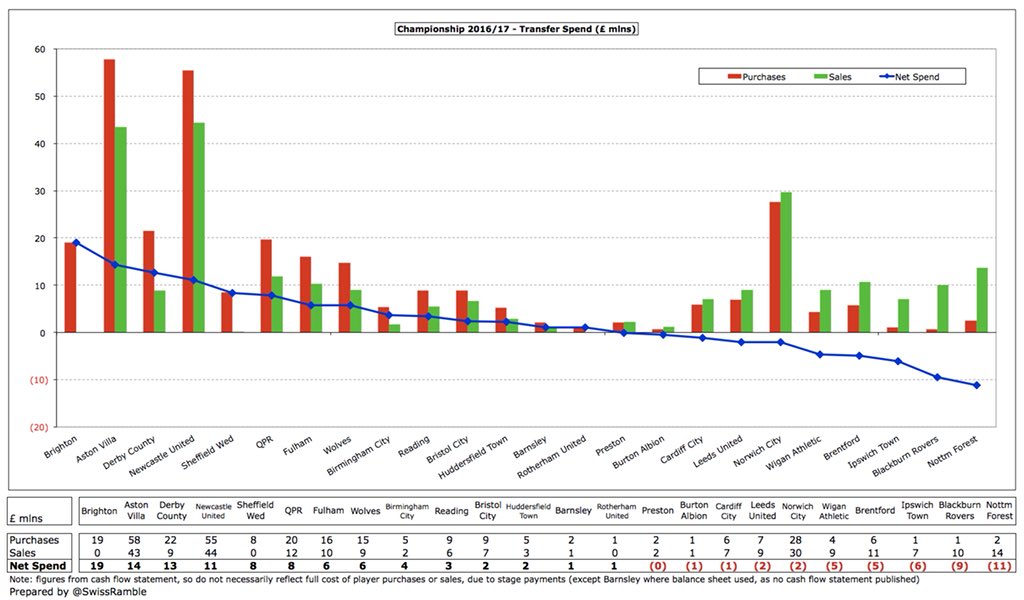
The highest debt in the Championship was at 3 clubs that have since been promoted to the Premier League (#BHAFC £207m, largely for stadium and training ground investment, #NUFC £152m and #CardiffCity £127m), followed by #Rovers £107m and #ITFC £89m. 
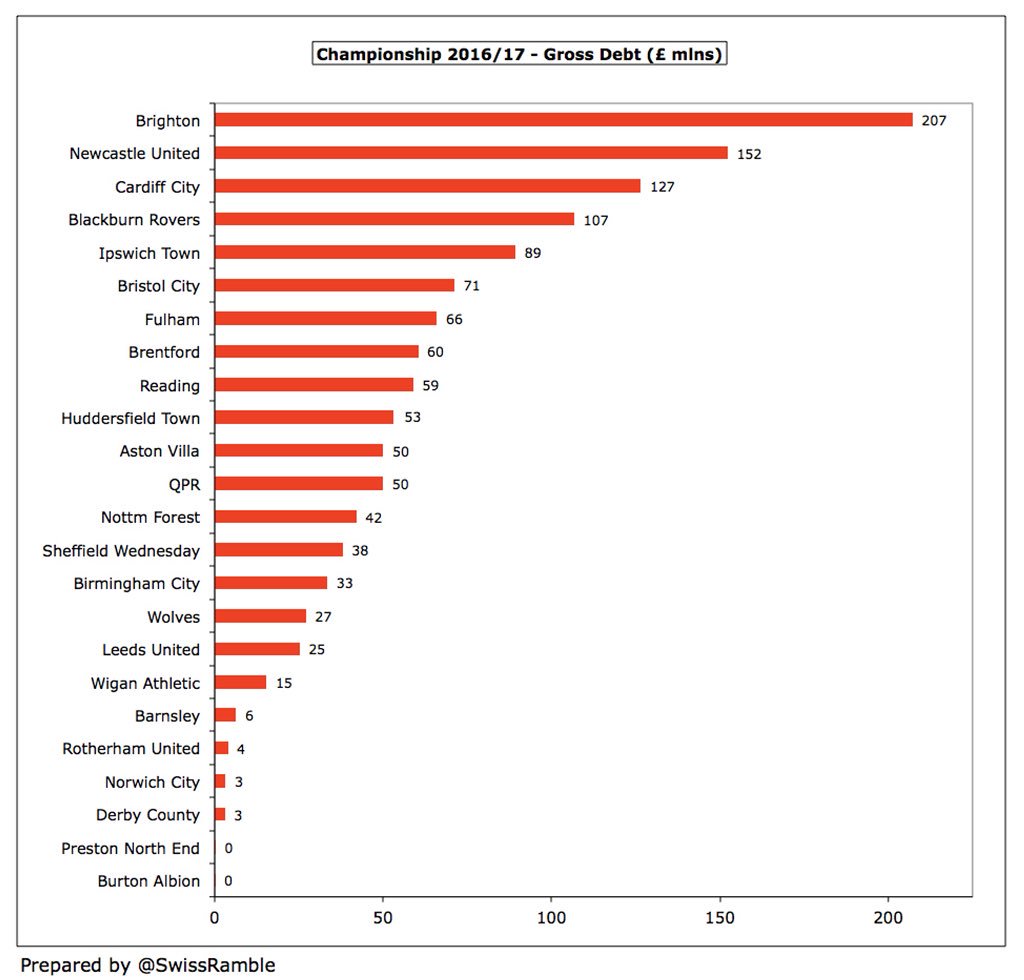
Although debt levels are quite high at some Championship clubs, most of it has been provided by the owners, who charge the clubs little or no interest. In this way, only 5 clubs paid more than £500k in 2016/17: #ReadingFC, #DCFC, #BristolCity, #Rovers and #LUFC. 
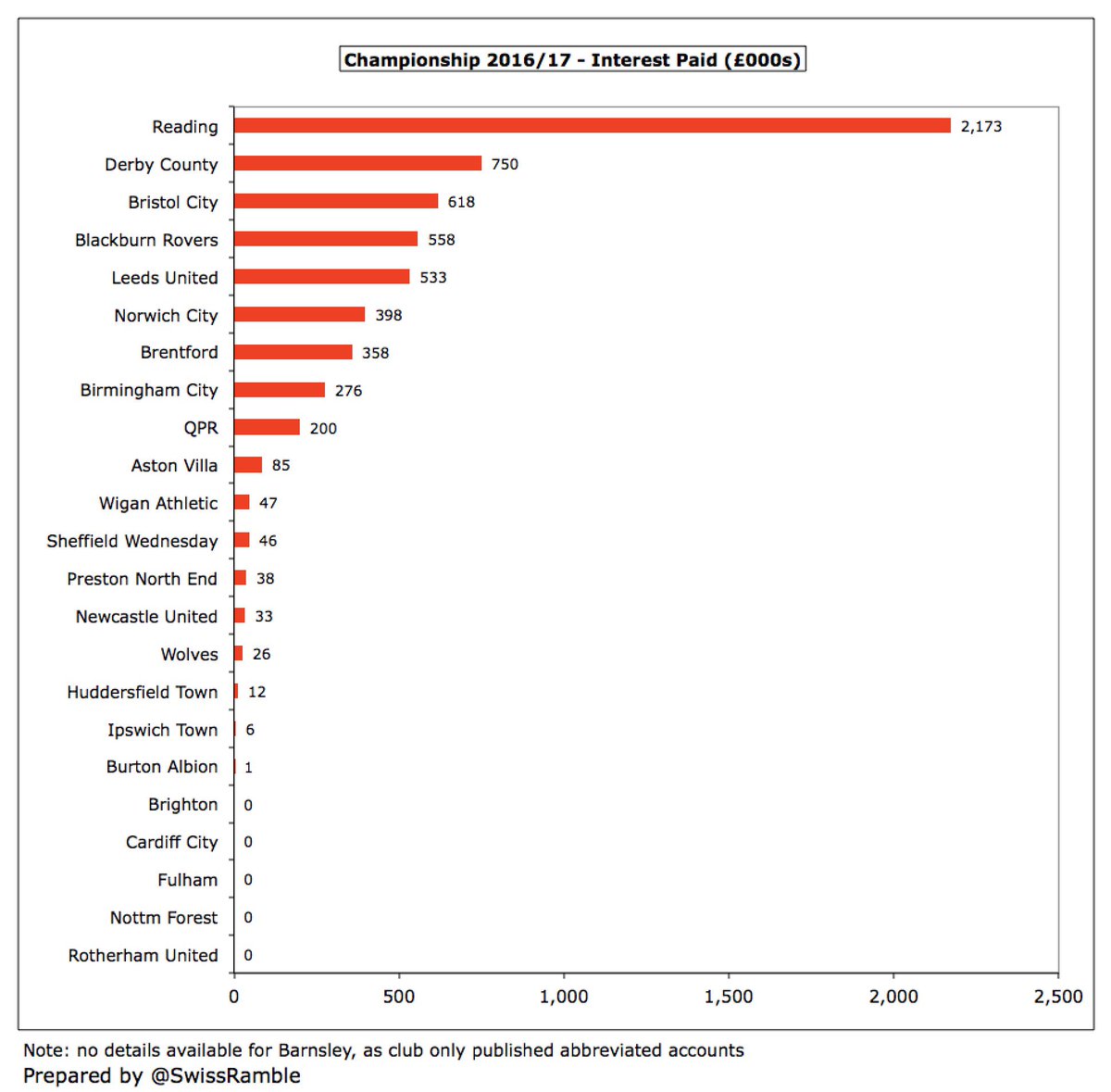
Unsurprisingly, cash balances are on the low side at Championship clubs with the highest at #CardiffCity £9m, #BarnsleyFC £6m, #QPR £4m and #LUFC £4m. 
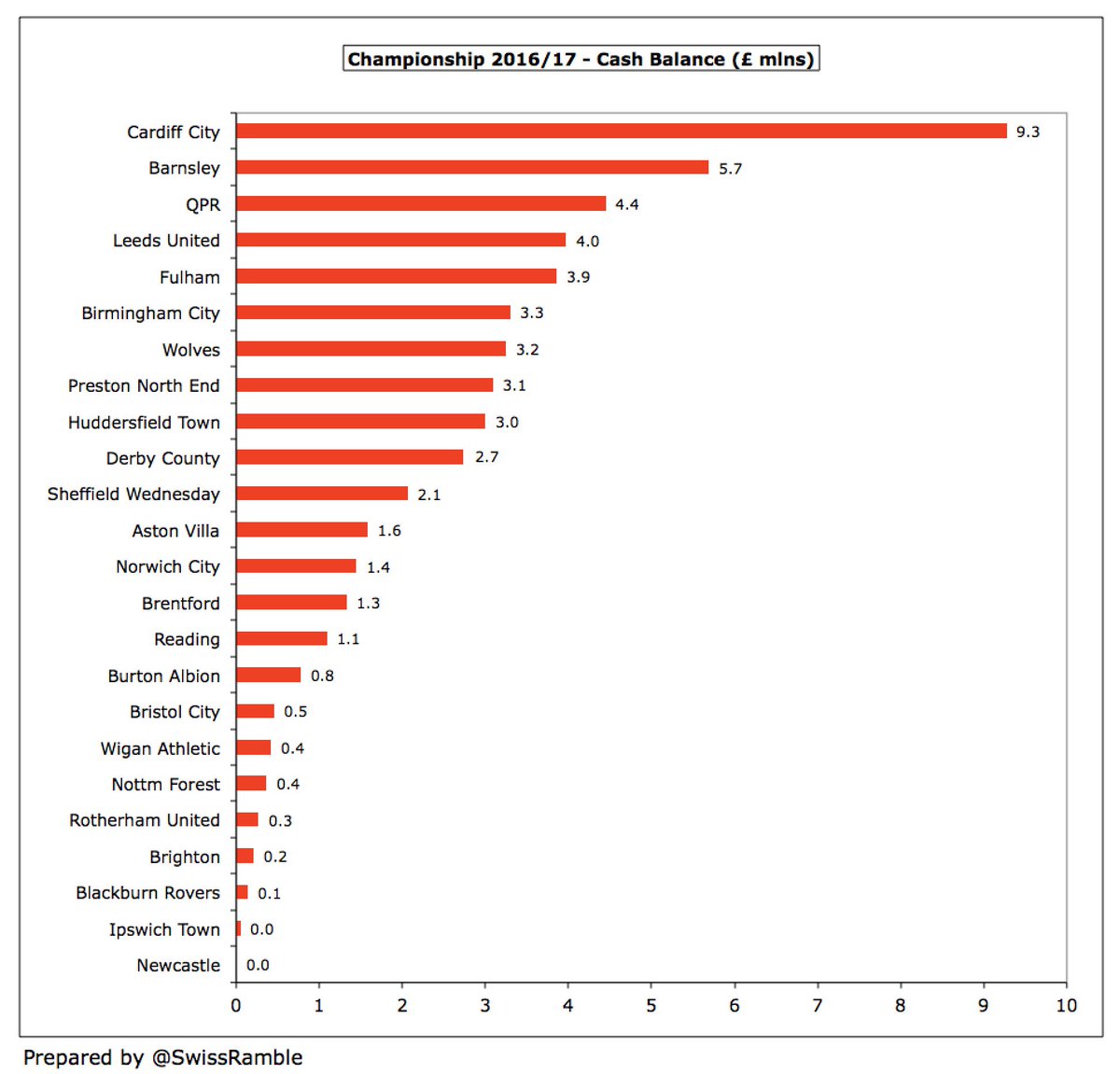
• • •
Missing some Tweet in this thread? You can try to
force a refresh




